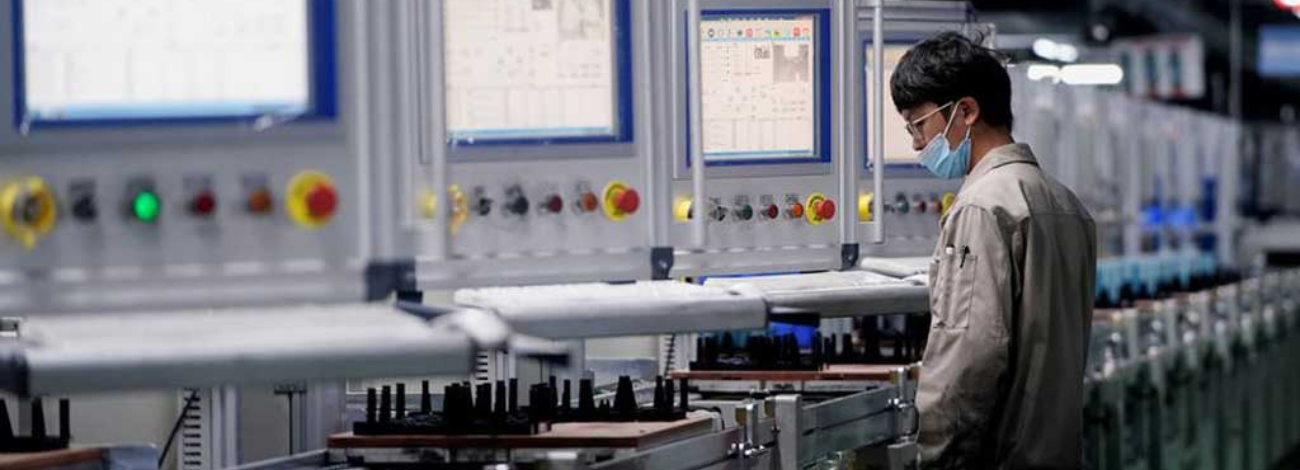The US sanctions targeting Huawei specifically, as well as the broader Chinese semiconductor industry, have severely hindered the company’s ability to access advanced chip manufacturing technologies. This situation has raised significant concerns among businesses about whether these companies can sustain their technological development in chip technology amidst the constraints imposed by the US sanctions.
Pressure from the US, companies in China cannot develop a 3.5nm modern chip
Tensions between the US and Russia
Behind the hundreds of new US sanctions targeting Russia and China is Washington’s growing concern about the course of the conflict in Ukraine. For Russia, the sanctions imposed by the US are directly related to Moscow’s actions and involvement in the war in Ukraine. Washington wants to put pressure on Russia to force it to end its military operations and withdraw from Ukraine.
For China, the US has deep concerns that Beijing may provide material support to Russia, increasing Moscow’s military might in the armed conflict. Washington has accused some Chinese companies of supporting Russia’s defense industrial base and has threatened to impose severe sanctions if China continues to support Russia. Thus, the US wants to prevent any Chinese involvement in the conflict to isolate Russia on the international stage.
Direct pressure on Chinese semiconductor industry
Under pressure from Washington, semiconductor companies in China are forced to change their strategies and prioritize the expansion and upgrading of traditional semiconductor technologies, rather than investing in more advanced modern technologies.
Specifically, US bans have severely restricted China’s ability to access advanced semiconductor components, equipment, and technologies from the US and its Western allies. This movement has forced Chinese semiconductor companies to focus their resources and investments on improving and upgrading their traditional semiconductor manufacturing technologies, rather than pursuing more modern technology applications.
This shift could have a significant impact on the long-term competitiveness and innovation of Chinese semiconductor industry. Companies will miss out on opportunities to access and deploy advanced technologies, which could slow the development and modernization of this critical industry in China.
Huawei’s Concerns about China’s Inability to Ensure 3.5 Nanometer (nm) Chips
Huawei’s Cloud Service CEO, Zhang Ping’an, has expressed concern that due to US sanctions, China could not access the 3.5 nm chip manufacturing technology from TSMC – Taiwan’s leading chip manufacturer.
The inability to access the latest semiconductor technology will significantly impact the competitiveness of Chinese technology companies, including Huawei. These companies will not be able to manufacture the most modern, high-performance, and energy-efficient electronic products.
This latest information directly contradicts previous reports touting China’s self-assurance and the rapid expansion of its semiconductor industry. Those earlier reports had boldly claimed that China would soon possess the domestic capability to manufacture advanced semiconductor chips. However, the current situation suggests those assertions were overly optimistic.

The Harsh Reality of Chinese Semiconductor Industry
Without equipment from the leading companies, significant progress seems unachievable
The production of 3.5nm semiconductor chips is a major technological challenge, as it requires EUV (Extreme Ultraviolet Lithography) optical equipment. EUV is an advanced technology owned by only a few companies such as TSMC, Samsung, and Intel.
Huawei currently does not possess the EUV technology to manufacture 3.5nm chips. It forces them to continue using the current 7nm chip technologies. Localizing EUV technology is considered very difficult due to patent issues held by the US and the Netherlands.
US restrictions have severely impacted the ability of Chinese semiconductor companies to access advanced chip manufacturing technology from the US and its Western allies. Companies like SMIC and Hua Hong Semiconductor, major Chinese foundries, are having to focus on expanding and upgrading traditional semiconductor technology rather than innovating and deploying more advanced technology processes.
Additionally, the domestic memory chip industry is also facing difficulties in accessing key manufacturing equipment from US suppliers like Lam Research. This limits the ability of Chinese memory companies to upgrade technology and production capacity.
China has not yet had a favorable opportunity to develop the production of 3.5nm chips.
In May, the Chinese government announced the third semiconductor fund with a record value of up to $47.5 billion (equivalent to 65.6 trillion won). China has a strong commitment and huge investment in the semiconductor technology field, to enhance its self-sufficiency in this critical field.
In this context, Huawei – one of China’s leading technology companies – has positioned itself as a bright spot when it started mass-producing 7-nanometer (nm) chips last August without using extreme ultraviolet (EUV) technology – a technology considered very important in the production of advanced semiconductor chips. This has caused a wave of shock in the global semiconductor industry.

Although Huawei has succeeded in mass-producing 7nm semiconductor chips without using EUV technology, the company still does not have the EUV technology to produce more advanced 3.5nm chips. However, Huawei is still striving to catch up and bridge this gap. Despite Huawei’s inability to currently manufacture 3.5 nanometer (nm) chips, the company has announced plans to move on to produce 3 nm semiconductor chips, in collaboration with the domestic manufacturer SMIC. This planned progression demonstrates that Huawei and China remain steadfast in their goal of enhancing domestic chip technology capabilities, as they strive towards greater self-sufficiency in this critical industry.
To get the latest updates on the latest moves from the US and the impact of Chinese semiconductor industry in the coming time, follow us at FPT Semiconductor!